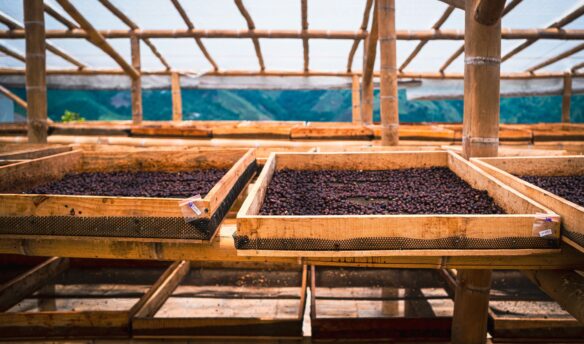✉️ This story was featured in this week’s Coffee News Club
👋 Get the Coffee News Club newsletter in your inbox weekly—sign up.
Climate change continues to put coffee at risk. One of the suggestions scientists have proposed is to move production to higher altitudes and to areas once thought unsuitable for cultivation. To learn more, scientists examined 30 years of data in Yunnan—a subtropical region in China further from the equator than many other coffee-growing areas—to illuminate the climate threats that coffee could face in new growing regions.
The study, published in NPJ Natural Hazards, found that “chill stress,” or frost, was coffee’s primary climate stressor in the Yunnan region, where most coffee in China is grown. Yunnan sits at the northern edge of the “coffee belt,” the area between the Tropics of Cancer and Capricorn that offers the best conditions for growing coffee.
Researchers found that, for every 1°C temperature drop below freezing during the cherry’s maturation phase, coffee yields fell by nearly 19%. After frost, drought was the second-biggest stressor, followed by heat.
The study authors note that previous research has pointed to heat as the main threat to coffee yields. They also mention that Yunnan’s northern location brings lower temperature drops than most major coffee regions, which means their findings may not apply elsewhere.
However, as coffee production moves uphill in the face of rising temperatures, the authors write, “understanding coffee yield response to climate stressors in marginal growing areas is crucial.” The researchers recommended three key strategies to counter the impacts of frost, drought, and heat: plant more shade trees, improve irrigation infrastructure, and issue warnings quickly for frost and low temperatures to allow farmers time to prepare.
Read the full story on coffee climate challenges from Global Coffee Report here.
















